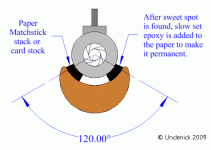Bigfishhunter
Inactive
I have a Ruger m77 MkII that doesn't shoot well, surprise, surprise. I like a lot of the aspects of the gun, but would like it better if it could group better.
I have sanded out the synthetic stock to make the barrel float. Not sure if that did anything positive, certainly not on the range. It almost feels as though the forend is wimpy now, and am wondering about barrel slap.
My thoughts going forward were two-fold, 1. put in a trigger 2. Glass bed the thing.
Then I saw that Hogue stocks sell a full bedded option. Is this something worth going with? What are the pros and cons of glass bedding myself, vs the Hogue stock?
My initial thought is that with the Hogue I am spending $300 and not sure if I will see any positive effects.
appreciate any help
I have sanded out the synthetic stock to make the barrel float. Not sure if that did anything positive, certainly not on the range. It almost feels as though the forend is wimpy now, and am wondering about barrel slap.
My thoughts going forward were two-fold, 1. put in a trigger 2. Glass bed the thing.
Then I saw that Hogue stocks sell a full bedded option. Is this something worth going with? What are the pros and cons of glass bedding myself, vs the Hogue stock?
My initial thought is that with the Hogue I am spending $300 and not sure if I will see any positive effects.
appreciate any help

